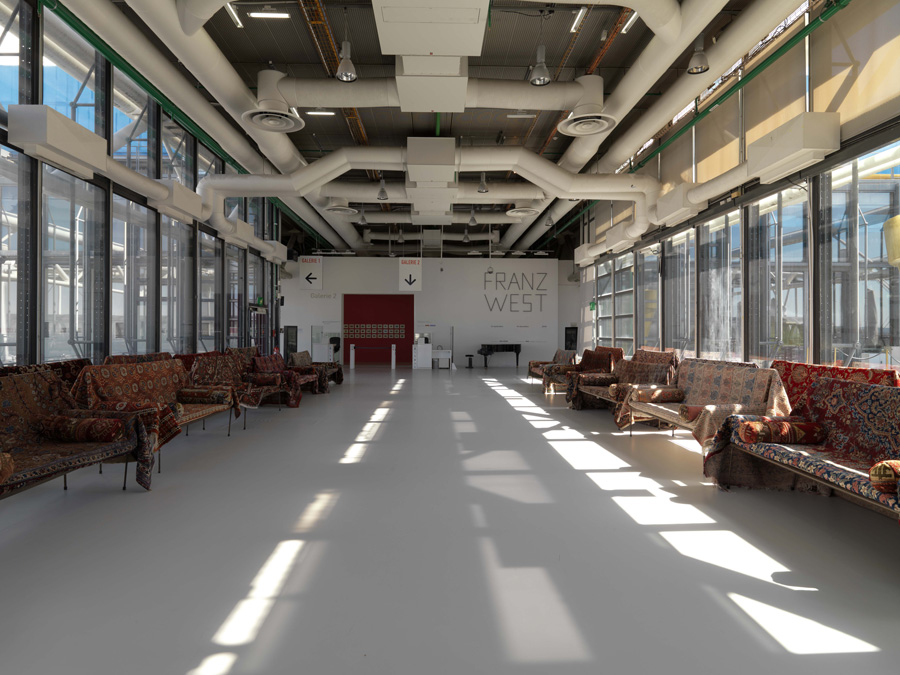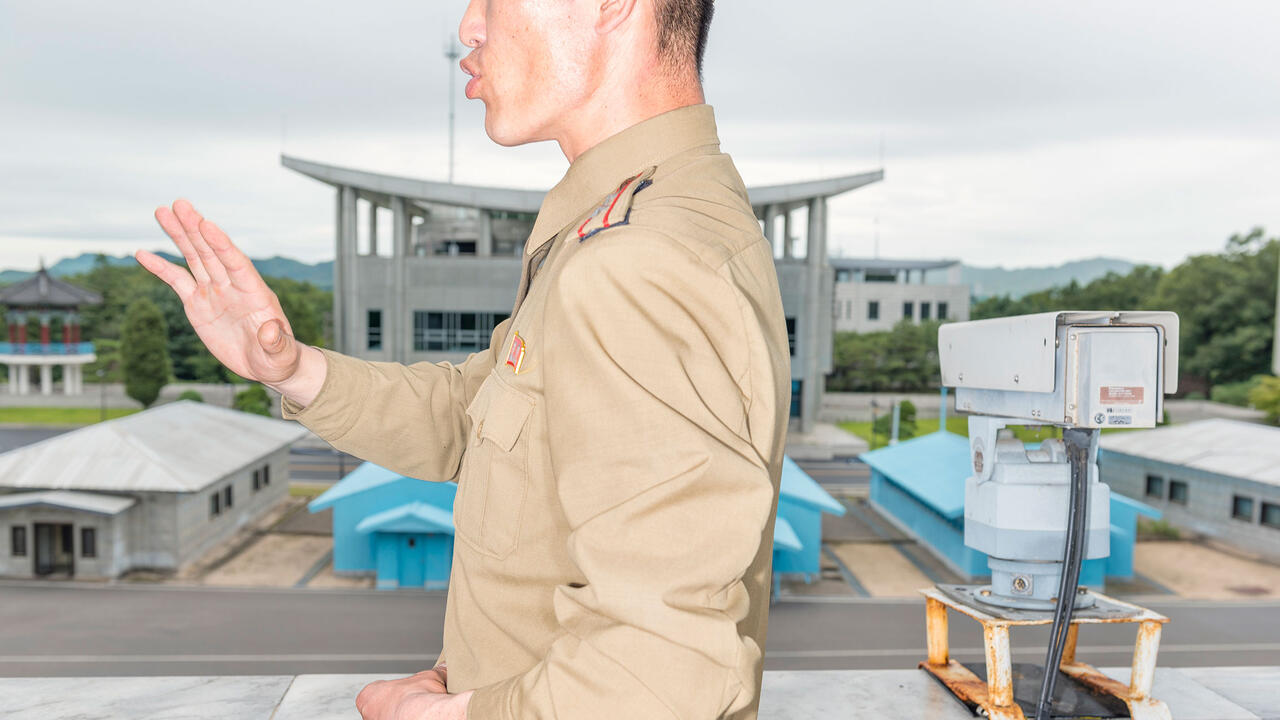Between Two Senses: Franz West's Invitation To Look And Touch
His first major retrospective in France at Centre Pompidou, Paris, reveals the artists's ongoing dialogue between the visible and the haptic
His first major retrospective in France at Centre Pompidou, Paris, reveals the artists's ongoing dialogue between the visible and the haptic

A retrospective of Austrian artist Franz West at the Centre Pompidou in Paris begins where most biographical tales perhaps should – with his mother, Emilie West. Born to a well-to-do Viennese Jewish family, she espoused communist ideals and the artist’s father, Ferdinand Zokan, a Serbian coal merchant. The family lived in a public housing complex, out of which Emilie ran a private dental practice. Her clients included many artists and poets, among them Reinhard Priessnitz, a poet and theorist who would give the name Paßstücke (Adaptives) to West’s most iconic series of sculptures. This early contact with Vienna’s artistic milieu would have a profound impact on the young West’s later career, as would the sounds of whirling drills and the image of his mother creating white and pink moulds of teeth from plaster and resin.
Including 180 works made between 1972 and 2012, the exhibition is not only the first major retrospective of West’s work to be shown in France but also one of the largest and most comprehensive. At its spiritual and narrative heart are the ‘Paßstücke’ (1973–2010): sculptures consisting of a minimal steel skeleton dressed somewhat haphazardly with painted plaster. Derived from the German verb anpassen (to adapt), the ‘Paßstücke’ were named for their ability to seemingly accommodate the body of whoever handled them. Seeing the unique way that each person held, manipulated and even wore the sculptures, Priessnitz believed that these works could give form to individual neuroses.

Visitors can discretely explore their own psyches with four of the 11 ‘Paßstücke’ installed near a pair of large dressing rooms resembling those that West often included in his installations. There are no mirrors in the Pompidou show, though they were also among the elements that West included to enrich the visitor’s experience of these works. Hidden in the dressing rooms, visitors could watch themselves manipulate the ‘Paßstücke’, thereby opening up a dialogue between the visible and the invisible, the sense of sight and the sense of touch.
Although they appeared early in his career, these sculptures encapsulate the essence of West’s oeuvre – his affinity for grotesque, misshapen forms, his acerbic humour, his love of accident and spontaneity and his desire for human contact.
For the rest of his career, West reshuffled these themes, with a few formal innovations. The 1980s saw the arrival of colour in his work – garish pastel pinks and greens that recall the materials his mother used in her dental practice. Furniture also makes an entry into the artist’s formal repertoire around this time. Functional, although hardly ergonomic, several of these untitled and inelegant chunks of welded scrap metal, made between 1988 and 1989, are dressed with a single sheet of newspaper as a sardonic concession to comfort.

Despite his desire to remain close to a trash aesthetic (West destroyed any pieces that his friends had the carelessness to describe as beautiful), the work he made towards the end of the 1990s is more refined. Rough forms become streamlined, colours more saturated and convivial, as with Knotzen (2002): a trio of hard metal sculptures that look deceptively like brightly painted beanbag chairs and which visitors can sit upon. The final part of the exhibition displays works from the 2000s, including the original collage versions of the posters West made for his Gagosian Gallery shows as well as several maquettes for large-scale public sculptures, one new direction that the artist was exploring at this time.
By making the ‘Paßstücke’ monumental, however, West precluded the element that made his first sculptures so groundbreaking: their ability to be held. If many artists in the latter half of the 20th century explored tactility – from Jean Dubuffet’s multisensory installations to Lygia Clark’s ‘Relational Objects’ made of webs of rubber bands and plastic sacks – West, in his iconoclastic spirit, went perhaps the farthest to assert touch as the sense capable of dethroning the pre-eminence of vision.
Franz West runs at Centre Pompidou, Paris, until 10 December 2018.
Main image: Franz West, Poster Project (Gagosian Gallery, New York), 2001, acrylic paint and collage on cardboard. Courtesy: the artist and Gagosian Gallery. Photograph: Markus Schauer






















